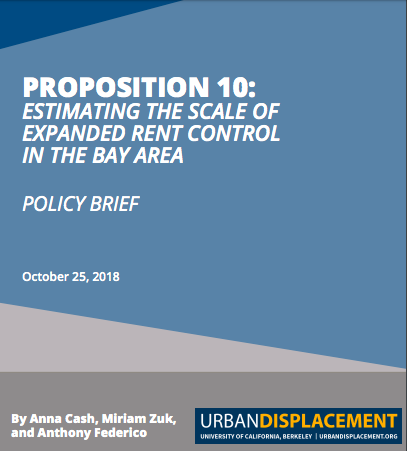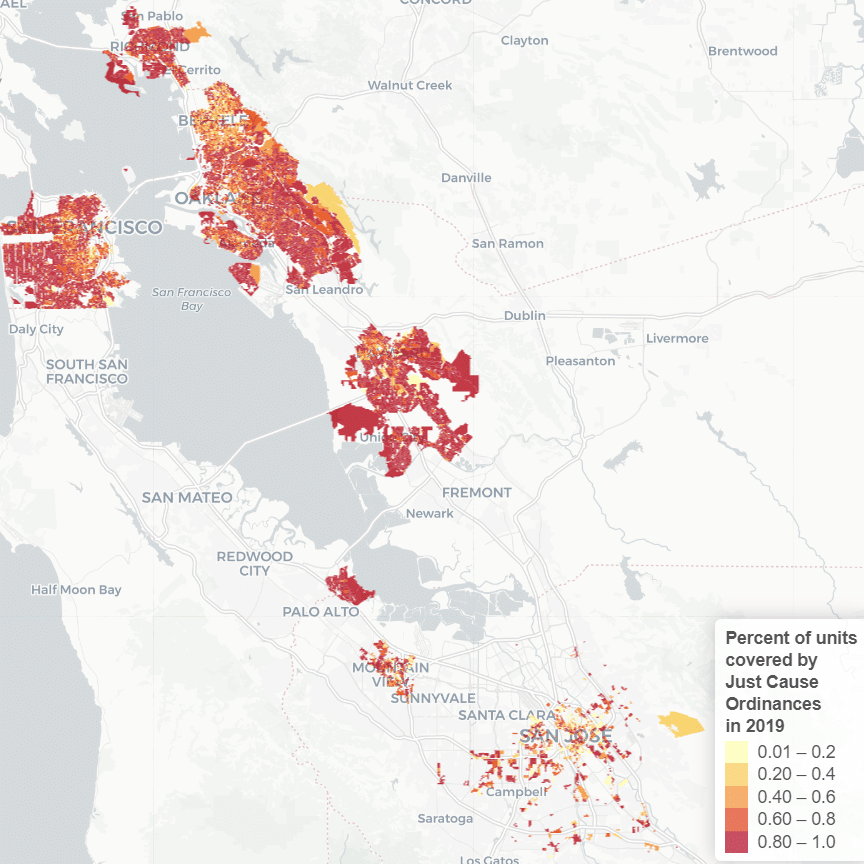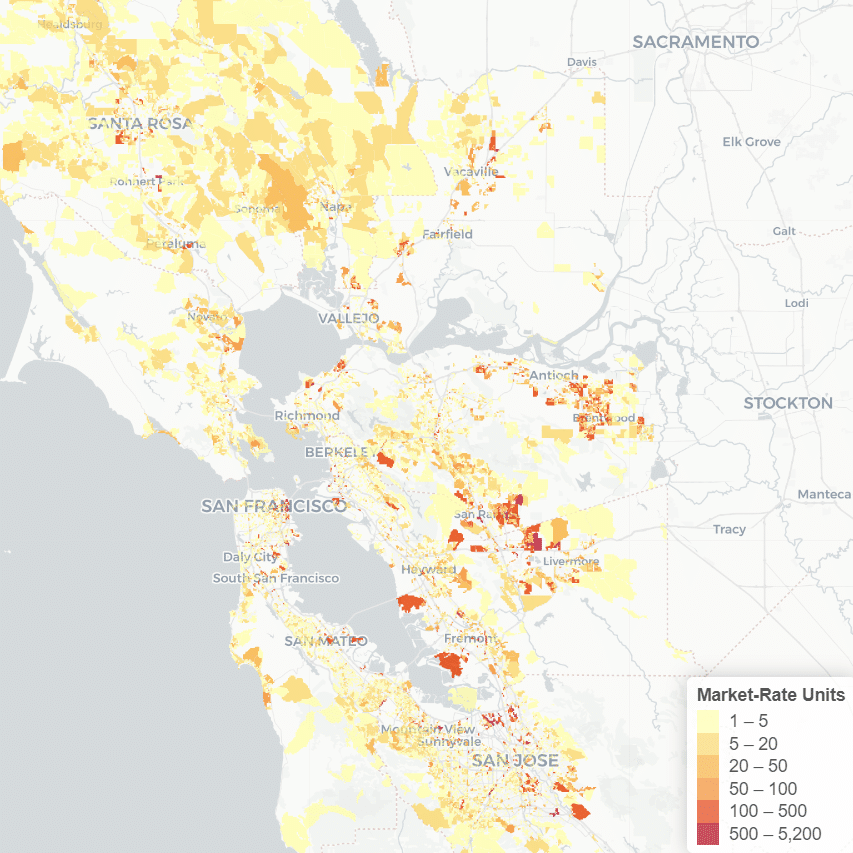Proposition 10 has Bay Area voters buzzing. With nearly half of Bay Area renters spending 30% or more of their income on rent, and with the rent burden falling even more heavily on low-income communities and communities of color, it should be no surprise that advocates in the region want to see rents reigned in.
Prop 10 would remove constraints on the types of housing units jurisdictions cover in local rent control ordinances. These constraints come from the 1995 Costa-Hawkins Rental Housing Act legislation, which prohibits three features of rent control. Upon the passage of Costa Hawkins in 1995, single-family rentals became exempt from rent regulation, (2) housing built after 1995 (or any earlier cut-off date already in local rent ordinances) also became exempt, and (3) and vacant units were exempted too, so owners could increase rents between tenancies without any restriction.
So, what is the demand for rent control in the Bay Area? And what does the actual coverage of rent control in the Bay Area look like today? How could it expand on November 7th, if voters approved Proposition 10 on the November 6th ballot?
Overall, we ask: does Proposition 10 make sense for the Bay Area? We conclude that yes it does – many more tenants could be protected from rent hikes if Proposition 10 were to pass. Renter protections are a key component to any suite of solutions to address the displacement crisis inflicting the region, which has resulted in further segregation and exclusion for the region’s most vulnerable residents. It is imperative for policymakers, however, to prevent the unintended consequences of rent control (i.e., deferred maintenance and landlords removing units from the rental market) with creative policies that ensure an inclusive future for the region.
Read about the detailed analyses and findings in the policy brief: Proposition 10: Estimating the Scale of Expanded Rent Control in the Bay Area.
Key findings:
- Today, around three quarters of all renter households – approximately 885,000 – in the Bay Area are not protected from rent hikes, and most of these households are also unprotected from no-cause evictions. Around 41% of the households not protected by rent control are families with children.
- Proposition 10 could result in a significant expansion of rent control to cover tens of thousands more tenants in cities that have already passed these policies, especially for tenants in single-family rentals. Over the last ten years cities like Oakland, Richmond, Mountain View, and San Jose have seen a large uptick in the share of single-family homes being used as rentals.
- In terms of covering “newly constructed units” in some form of rolling inclusion such as that proposed in Berkeley’s Measure Q, we find the potential impact of extending rent control to single-family rentals would have a larger impact than modest changes to the new construction cut-off year, possibly due to low production rates in the last half of the 1990s. However, instituting rolling cut-offs could provide significant coverage into the future, especially as cities have begun to increase multi-family housing production and hopefully will continue to do so.
- It is challenging to estimate both the exact number of rent-controlled units, and the prevalence and magnitude of extreme rent hikes due to severe data limitations. Both of these facts point to the need to establish better data collection systems, which would allow jurisdictions to better assess the problems and tailor policies to address them, while increasing transparency along with other potential benefits.
Take a look at our infographic on rent control FAQs, created in collaboration with The Program for Environmental and Regional Equity (PERE) at University of Southern California, and dig into the research further with PERE’s literature review, “Rent Matters: What Are the Impacts of Rent Stabilization Measures?”.






